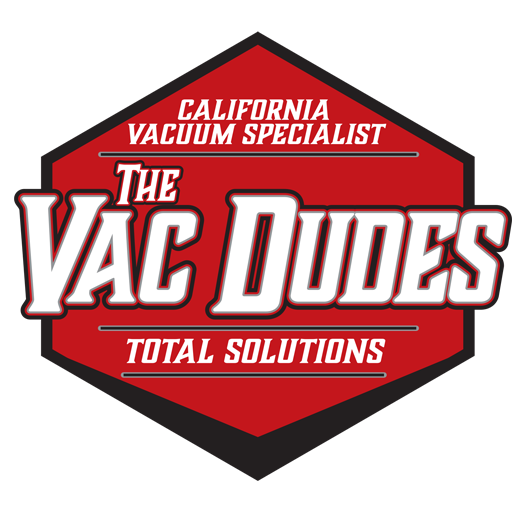- Proudly Serving Southern California
- hello@thevacdudes.com
Need Help? Talk to an expert!
How whole-home vacuums cut allergens, pet dander & fine dust (with real science behind it)
If you’ve ever vacuumed and then watched the sunlight fill with sparkly dust, you’ve seen the problem: most portable vacuums kick tiny particles right back into the room—even some with HEPA labels. Studies show many portables emit ultrafine particles and even bacteria through leaks, exhaust, or when they stir settled dust off carpet and floors.
Central vacuum systems fix the root issue: instead of recirculating indoor air through a small machine, they pull dust out of your living space and exhaust it outdoors (or to a sealed canister in the garage), dramatically reducing what gets re-aerosolized in the rooms where you breathe.
A quick customer story to set the stage
“I’ve had year-round allergies since college—sneezy mornings, itchy eyes, and a dog who sheds like it’s his job. We installed a central vacuum with a retractable Hide-A-Hose. The first surprise was how quiet it is in the rooms. The bigger surprise? I stopped waking up congested. We vacuum more often because it’s easier, and the air just feels…cleaner.” — Maya R., Aliso Viejo
What regular vacuums leave behind (and why that matters)
Ultrafine particles (UFPs) & PM2.5: Lab testing on 21 consumer vacuums found massive emission rates of ultrafine particles (as high as 10¹¹ particles/min) and measurable PM2.5 from some units—tiny enough to penetrate deep into lungs. (PubMed)
Microbes & mold fragments: Researchers have measured bacteria and molds in vacuum exhaust/bags, confirming that vacuums can disseminate bioaerosols indoors. (PubMed Central)
Re-aerosolized allergens: Even with “good” units, vacuuming stirs dust and allergen particles back into room air for a while—one reason allergy specialists advise leaving the area during/after cleaning and using HEPA filtration when you must use a portable. (ACAAI)
Bottom line: If the machine lives in the room, some portion of what you vacuum can end up back in the room—unless the air is vented outside.
Why central vacuums help allergy sufferers
Exhaust stays out of your breathing zone. Central vacs send intake air to a remote canister and/or exhaust it outdoors, so the tiniest particles and odors don’t recirculate where you live, cook, and sleep.
Bigger motors, smoother piping, better capture. High airflow through smooth-wall tubing pulls more debris (including pet dander) before it can resettle.
Quieter in-room cleaning = longer, more thorough passes. Because the power unit is remote, you can actually hear yourself think…and you’ll clean more consistently.
What the research says
A clinical study of dust-allergic patients using central vacuum systems reported significant improvements in quality-of-life scores (nasal symptoms, sleep, activity). It didn’t rely on gimmicks—just moving the dust out of living areas worked. (Hide-A-Hose)
Another trial comparing central vs. non-central vacuums found that airborne dust levels during/after vacuuming were similar in their test protocol—reminding us that technique and overall housekeeping still matter. But the practical benefit of no indoor exhaust and symptom improvement supports central systems for sensitive households. (PubMed)
Pets, kids, and seasons: where a central vacuum shines
Pet hair & dander: High-airflow tool sets (turbobrushes, powered nozzles) + outdoor exhaust keep that “dog smell dust” from cycling through rooms again.
Pollen season: Entry rugs and high-traffic paths load with pollen; central vacs keep it from re-aerosolizing into the living room every time you vacuum.
Nurseries & bedrooms: Less in-room noise and less fine-particle exhaust = better cleaning without “dust clouds” right before bedtime.
“Do I still need HEPA?” (And other practical tips)
If you must use a portable in between central-vac sessions, choose sealed HEPA and change bags/filters often; true HEPA is defined by the EPA as capturing 99.97% of 0.3 μm particles, but only in a sealed path—leaks negate the benefit. (EPA)
Vacuum slowly and make overlapping passes; most allergen removal happens on the second and third pass.
Add a MERV-13 (or better) HVAC filter and run the fan after vacuuming to scrub residual particles.
Groom pets outdoors when possible; brush stations near a central-vac inlet are magic.
Can we retrofit a central vacuum in an existing home?
Yes. Most Southern California homes can be retrofitted with minimal wall cuts. We route smooth-wall piping through closets/attics, add in-wall ports where you need them, and (optionally) install Hide-A-Hose™ retractable hose systems so there’s no more lugging hoses room to room. We’ll map airflow, place inlets to cover your floor plan, and set the power unit in a garage or utility space.
What to expect with The Vac Dudes
Assessment & proposal: We measure airflow needs, discuss tools (powerheads, pet brushes), and plan inlet locations.
Clean install: Neat piping runs, discreet wall plates, garage-mounted power unit, outdoor exhaust.
Training & care: Quick owner walkthrough; reminders for bag/canister changes and filters.
Service & upgrades: We maintain all major brands (Beam, Electrolux, Cana-Vac, VacuMaid, etc.) and can modernize older systems with new hoses, power nozzles, and mufflers.
Ready to breathe easier?
If allergies, asthma, or pet dander are part of your daily life, a central vacuum can be one of the highest-impact air-quality upgrades you can make at home—especially when paired with good filters and habits. Let’s design a system for your floor plan and budget.
The Vac Dudes — Central vacuum design, install, and service across Orange, San Diego, Riverside & L.A. Counties.
Call/Text: (949) 228-7364
References & further reading
Vacuum emissions: Vacuums can emit ultrafine particles and bacteria; measured emission rates across consumer models. (PubMed)
Bioaerosols from vacuums: Microbial contents of bag dust & emitted bioaerosols show potential for spreading molds/bacteria indoors. (PubMed Central)
Allergy guidance: AAAAI on cleaning—vacuuming stirs dust; use HEPA and avoid rooms during/after cleaning. (ACAAI)
Central vacuum & allergy symptoms: UC Davis clinical study showing improved quality-of-life measures in dust-allergic patients using central vac systems. (Hide-A-Hose)
Central vs. non-central airborne dust: Clinical comparison found no significant difference in immediate airborne levels under study conditions, underscoring the role of overall practices. (PubMed)
What “HEPA” means: EPA overview of HEPA filtration performance. (EPA)
